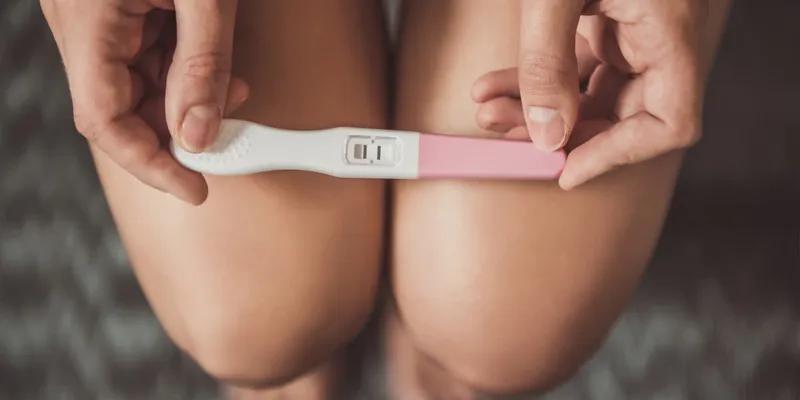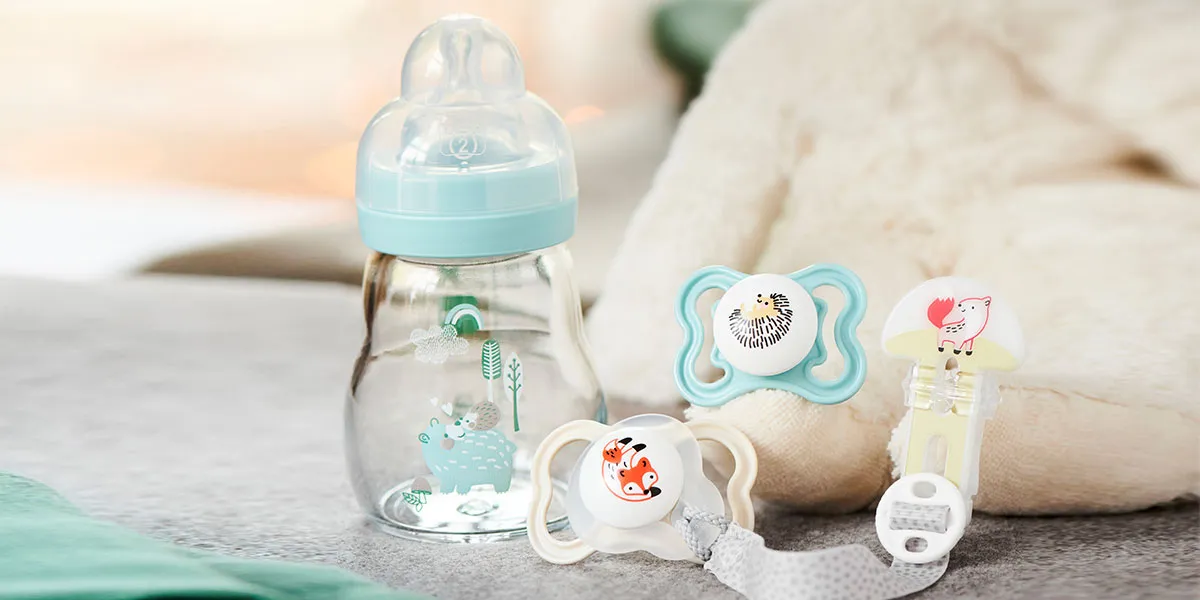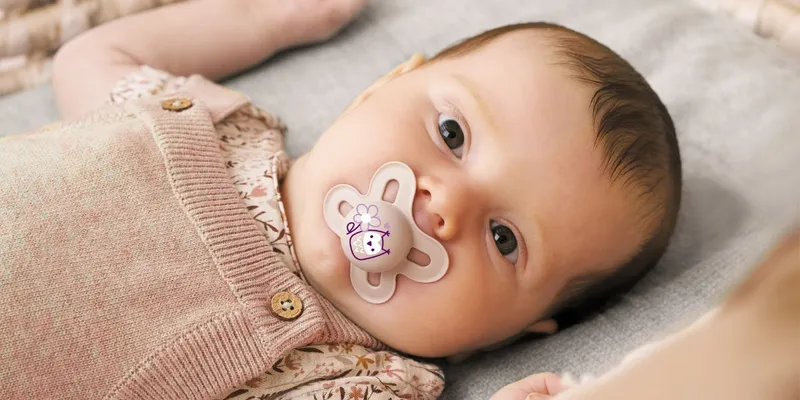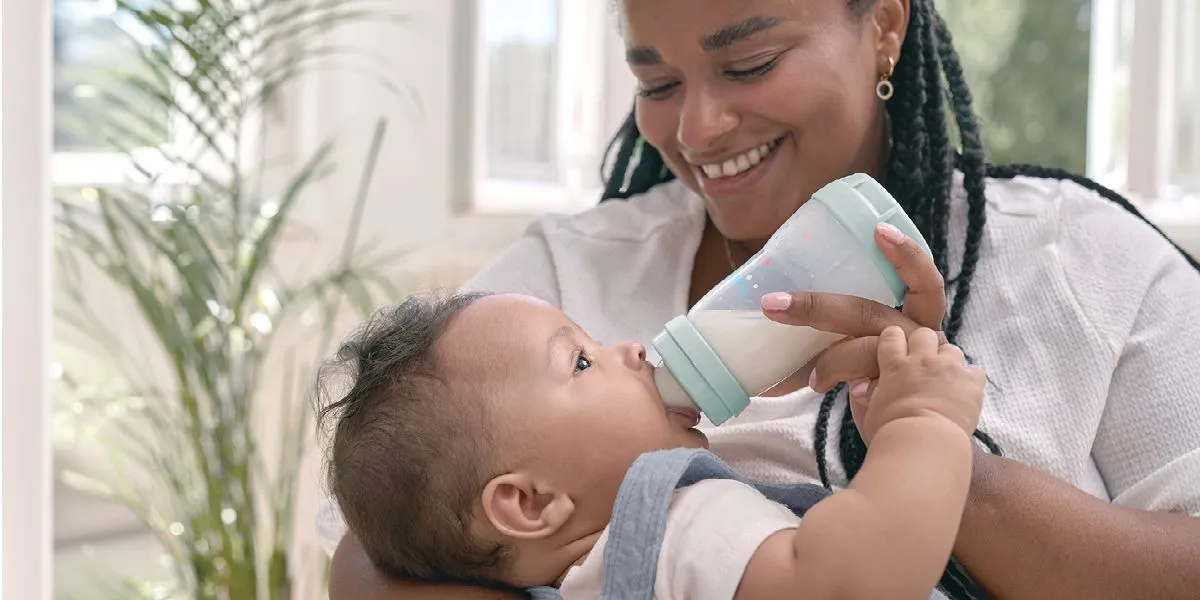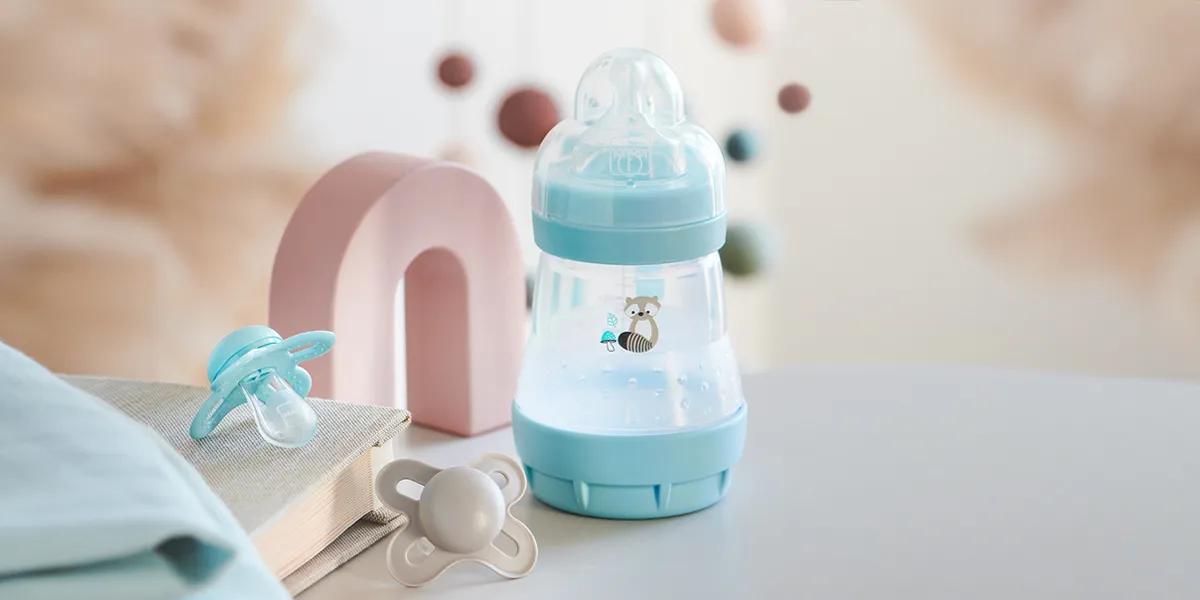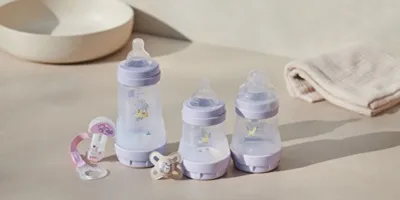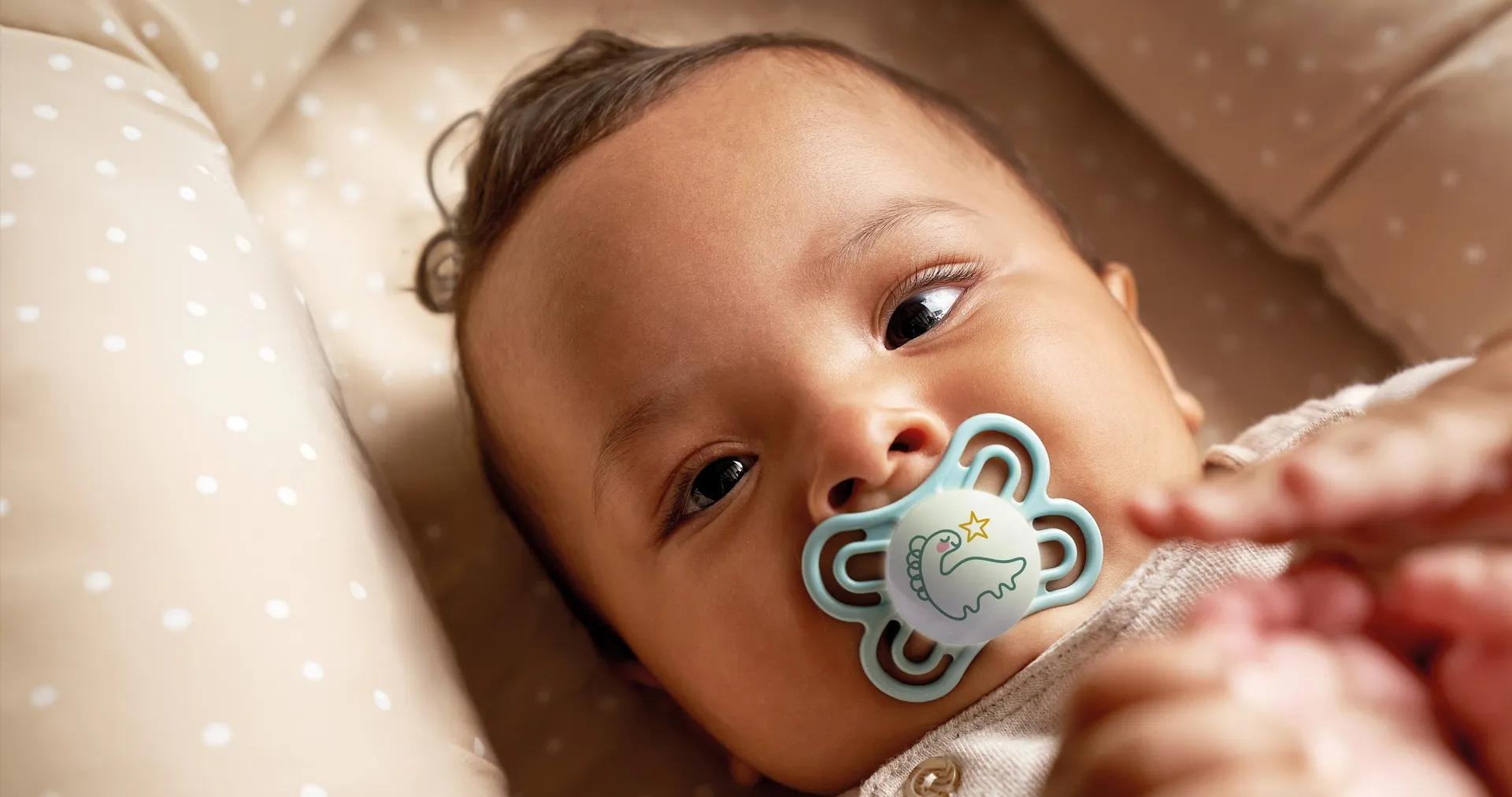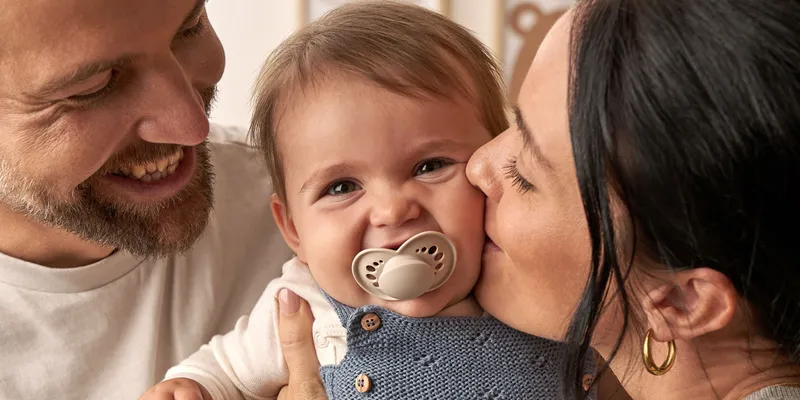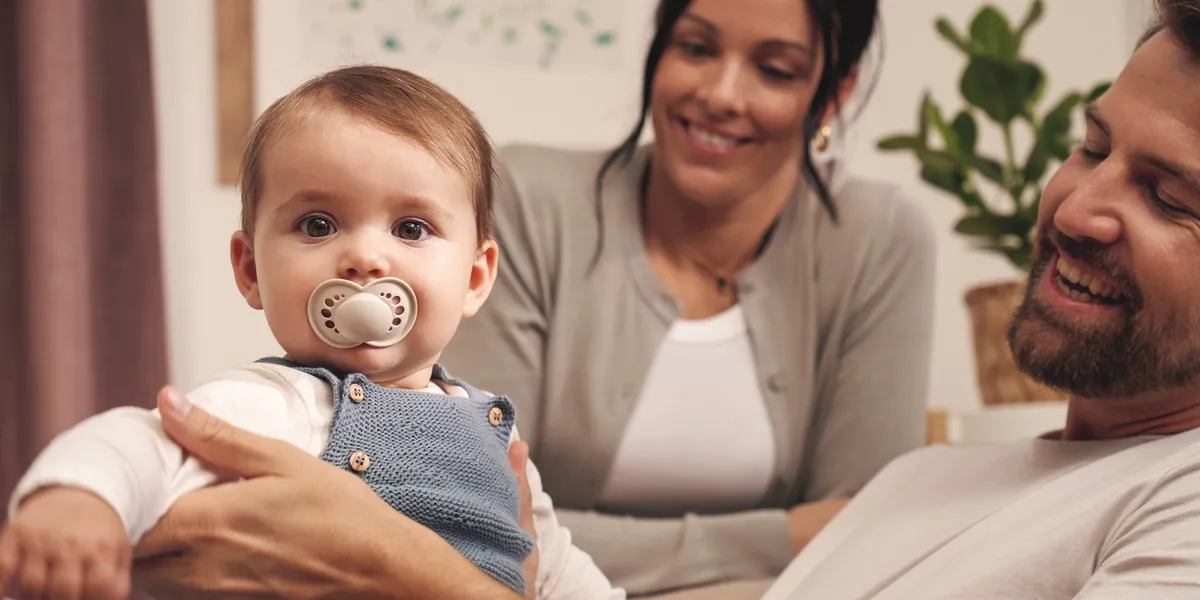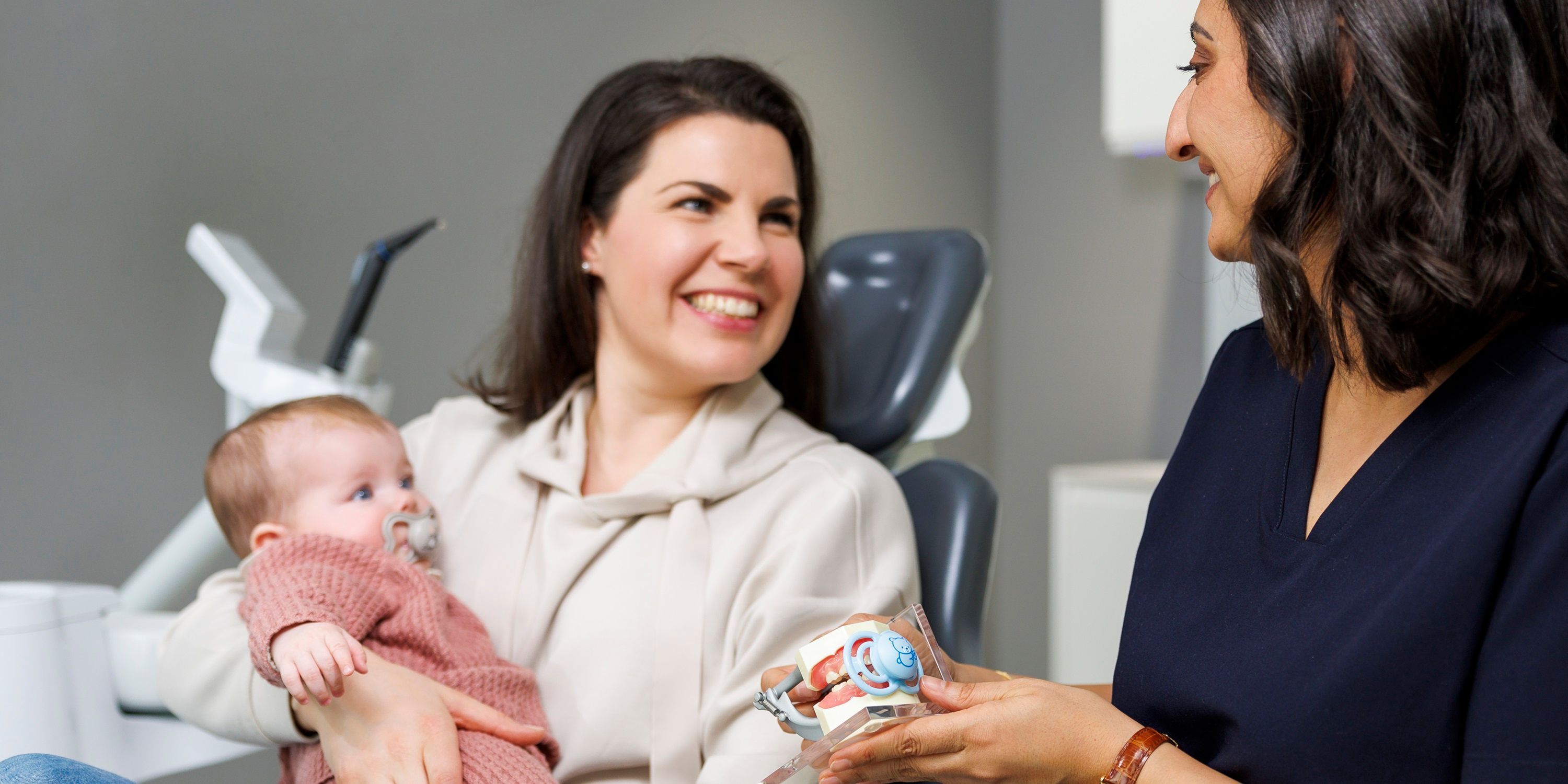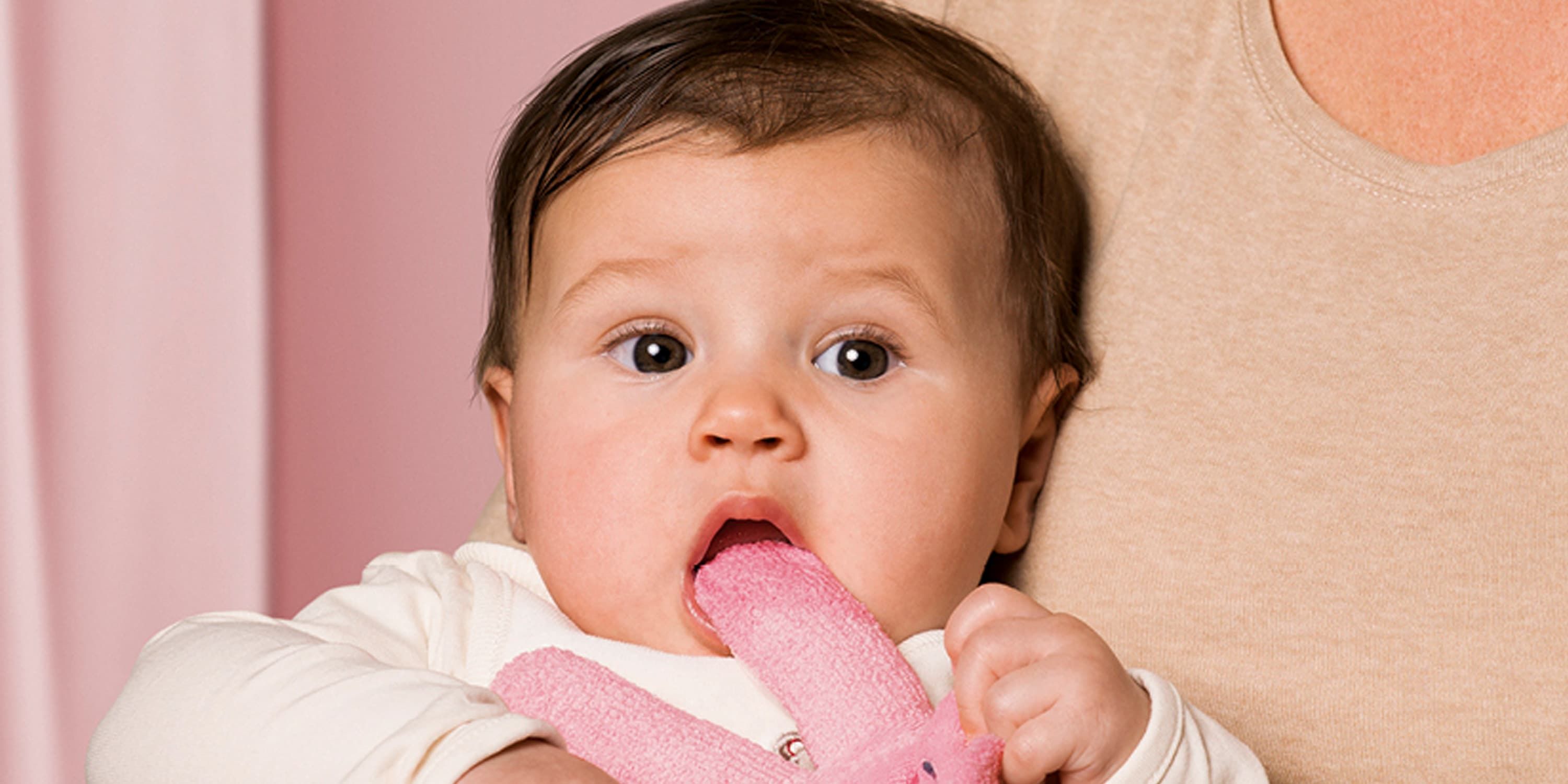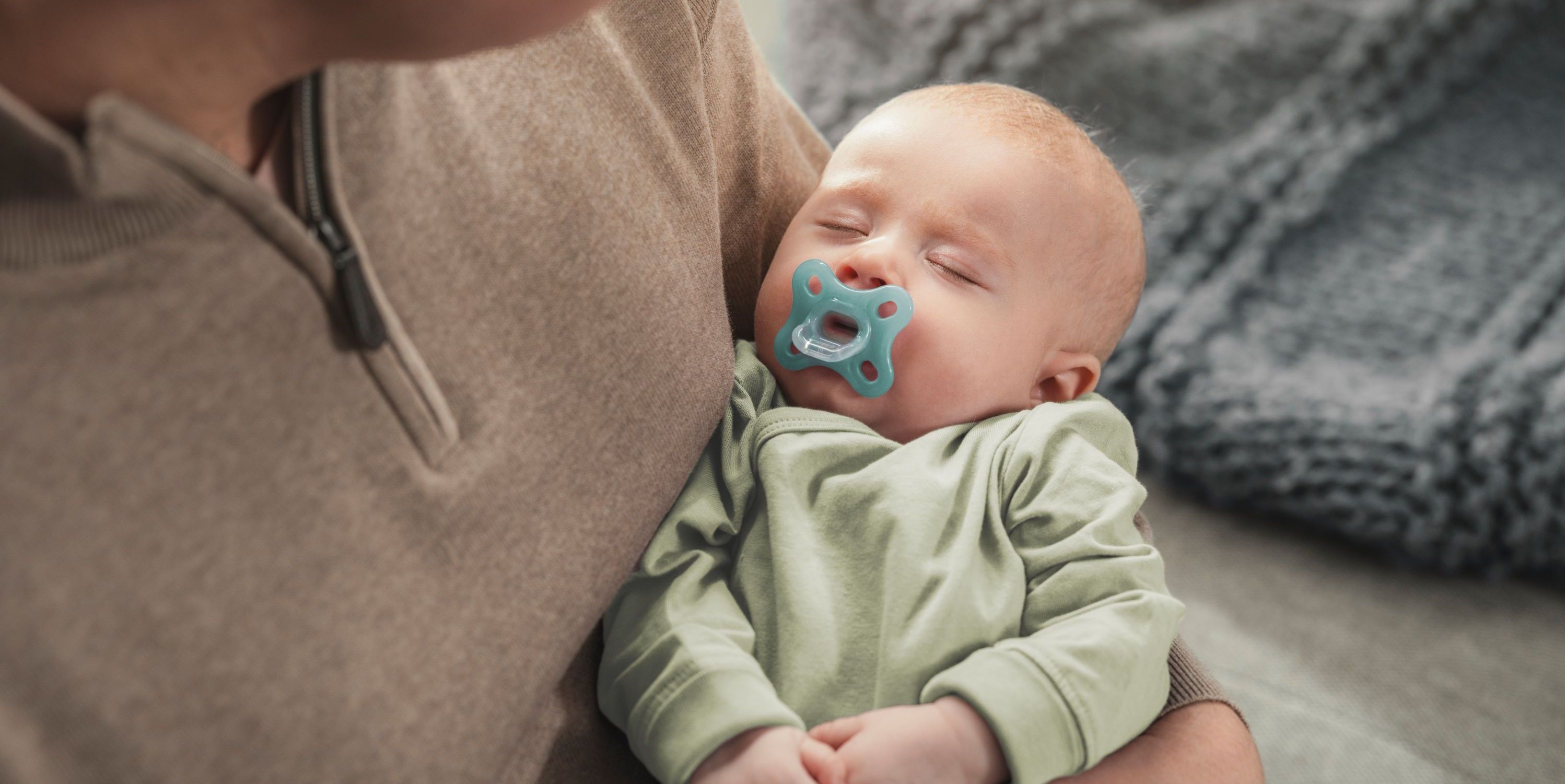Most babies love pacifiers. However, to prevent potential difficulties in the development of the jaw and teeth, our MAM expert Dr. Rebecca Slayton has some recommendations for the correct use of pacifiers.
“To begin with, parents need to be aware that there are several influences on dental development, not just the use of pacifiers. In some cases, there will be genetic factors at play. Then there is non-nutritive sucking, which is common to all children and involves sucking the fingers, thumbs, comfort blankets, favorite toys and so on.”
Because pacifiers are a major focus area for MAM, we asked Dr. Slayton to be a bit more specific in terms of pacifier use and its influence on healthy oral development.
“It depends a lot on the quality and design of the pacifier, as well as how long and with what regularity a child is allowed to use one.”
Dr. Rebecca Slayton
She further explained that prolonged pacifier use may result in malocclusion, such as anterior open bite and/or posterior crossbite. Studies have demonstrated that continued pacifier use after the age of two to three years can lead to malocclusion in both primary (milk teeth) and permanent dentition.
The age-old question
The question of the age at which a child should stop using a pacifier is tricky. As many parents know, once a child has got used to having a pacifier, the process of weaning away from it can be challenging. But the real issue is when it is actually necessary, or at least advisable.
According to Dr. Slayton, somewhere between two and three years is a sensible choice. It depends to some extent on the type of pacifier being used. Pacifiers that have a nipple with a thin neck have been shown to reduce the likelihood of anterior open bite. As a rule of thumb, try not to let your baby suck on the pacifier for extended periods.
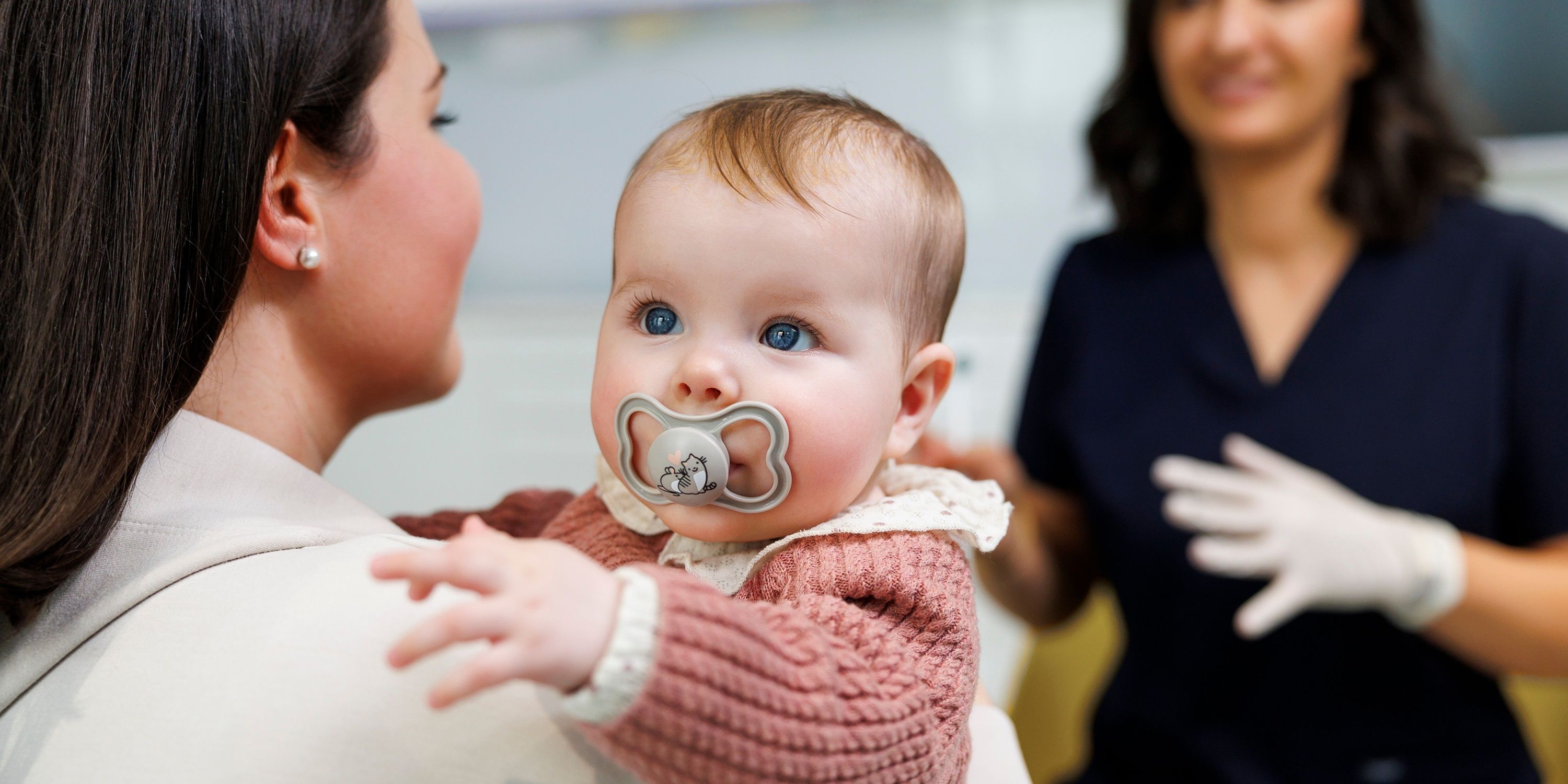
Pacifiers vs. digits
Thumb and digit sucking are more likely to result in an increased overjet. Both thumb sucking and the use of a low-quality pacifier with a thick nipple neck can cause an anterior open bite. In both cases, changes in the occlusion are more evident with prolonged habit use. For this reason, dentists recommend weaning off the nonnutritive sucking habit between 2 and 3 years of age.
The big question for parents is of course how do you know if you are choosing the right pacifier? What things should you look out for and what should you avoid?
Size matters
Pacifiers come in different sizes, based on the infant’s age or size. They can be made from a single piece of molded silicone or may be formed from multiple components. Whichever pacifier you choose, it should definitely have a shield that rests against the face and is large enough to prevent it from being swallowed or becoming lodged in the mouth. It also needs to be designed in such a way that it does not obstruct the nose.
Dr. Slayton went on to point out some other desirable features:
Ideally, the pacifier should have the following features:
1. an jaw-friendly nipple shape
2. ventilation holes to minimize the build-up of moisture on the skin
3. a nipple made from silicone or latex
4. a shield made from silicone, latex or a BPA-free plastic
Sources:
Lima AA, Alves CM, Ribeiro CC, Pereira AL, da Silva AA, Silva LF, Thomaz EB. Effects of Conventional and Orthodontic Pacifiers on the Dental Occlusion of Children Aged 24-36 Months Old. Int J Paediatr Dent. 2017; 27(2):108-119.
Wagner Y, Heinrich-Weltzien R. Effect of a thin-neck pacifier on primary dentition: a randomized controlled trial. Orthod Craniofac Res. 2016;19:127–36.
Dogramaci EJ, Rossi-Fedele G. Establishing the association between nonnutritive sucking behavior and malocclusions: A systematic review and meta-analysis. J Am Dent Assoc. 2016; 147(12):926-934.
Warren JJ, Bishara SE. Duration of nutritive and nonnutritive sucking behaviors and their effects of the dental arches in the primary dentition. Am J Orthod Dentofacial Orthop. 2002; 121(4)347-56.

